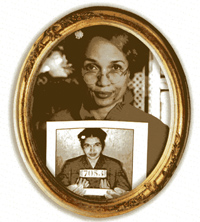Elementary school children are selling lemonade on the corner of Broadway and 116th. Nonprofits are collecting medicine. Grassroots organizers are training educators.
Across Morningside Heights and Harlem, residents have joined together to show their support for the people of Haiti, who are struggling in the aftermath of a 7.0 earthquake that caused devastation across the country on Jan. 12.
Some nonprofits are preparing to send a range of supplies, from prosthetic limbs to baby food, while other merchants and neighborhood organizations are collecting cash to donate to doctors.
“It’s amazing, because you know that the U.S economy is horrible, unemployment is 10 percent, and yet we are able, as a community, to come together,” said Elisa Vasquez, president of
P.A.’L.A.N.T.E., a non-profit in Harlem that has been gathering supplies to send to Haiti later in the year. “The fact is that every little bit counts,” she said. P.A.’L.A.N.T.E has partnered with Generation Harlem, a youth nonprofit that is collecting clothes, toiletries, and over-the-counter medicines to send to the Caribbean nation in mid-February or early March. Their plan is to support Haiti in the early spring and summer, when aid will start to dwindle but the need for it will not.
Marvin Bing, Jr., the founder of Generation Harlem, said that while the immediate response from the community has been great, he hopes people remember that rebuilding Haiti will be a long-term process.
“A lot of people maybe will forget in a few months,” he said. “We want to pick up the slack when things fall off. They will still need a lot of help.”
So far the group has filled 74 boxes and has even rented storage space to accommodate all the donations.
Lynette Velasco, spokeswoman for councilwoman Inez Dickens, said the councilwoman, who represents parts of Morningside Heights, is interested in long-term relief efforts and has spoken to UNICEF about planning a fundraiser.
Vasquez and Bing said they will seek the support of local politicians like Dickens in getting the financial assistance to send the supplies they have collected to Haiti.
Bing said that charity and generosity are characteristic of Harlem.
“Harlem being Harlem, we wanted to get the younger folks involved and have nonprofits come together. The Dominican, Spanish, and African-American youth in the neighborhood are organizing,” he said. “We want their recovery to be as sustainable as much as possible.”
Sarah Gitlin, CC ’13 and a member of the activists council of the Columbia University Democrats, said the club has learned firsthand this week how generous the neighborhood is as they prepare to send their first $3,000 check to Doctors Without Borders.
They collected money solely from donation cans that were distributed to 120 local businesses.
Gitlin said that while smaller, independently operated stores have been enthusiastic about displaying donation cans, larger corporate-owned businesses, have been unresponsive.
Still, she said, the interactions with local stores have been positive.
“The hardest part has been carrying the coins. They’re so heavy!” she said, adding that they’ve gathered 75 pounds in spare change and hope to collect $10,000 in the coming weeks.
In other parts of Morningside Heights, neighborhood groups are launching alternative relief efforts.
The Border Health Mission of FUNTOSALUD, a Bronx-based grassroots organization dedicated to providing aid and education to the border region between the Dominican Republic and Haiti, has set up a relief drive on the corner of 108th Street and Amsterdam to fund a mission trip to Haiti.
“What we do is provide a more unconventional, grassroots way of helping people,” said Alba Mota, the Mission’s coordinator. “We’re asking for food and medicine, but we’re also bringing spiritual leaders, toys, and educators on our trip.”
Their approach, she said, looks to offer “more holistic ways of providing aid.”
Mota stressed that FUNTOSALUD was different from other relief organizations, because they have spent time in Haiti and understand what will be effective within the existing culture.
“Too much aid right now is being concentrated in Port-au-Prince, and not enough in the country and in villages,” she said.
Vasquez said that she was also planning a trip to Haiti with P.A.’L.A.N.T.E, and agreed that they should focus efforts in areas outside of Port-au-Prince. She said, “These are our brothers and sisters, of course.”
Shira Poliak and Sam Levin contributed reporting.
news@columbiaspectator.com

















